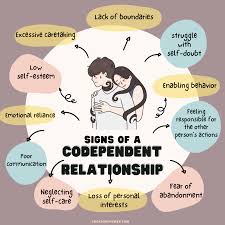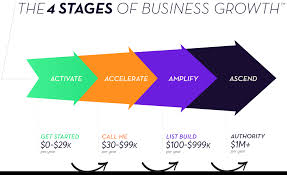Snickers gives energy, Rich fills life with taste, and the brand platform forms a complete image of the company. We analyze the elements, examples and stages of brand platform development.
What is a brand platform?
The Importance of a Brand Platform for a Company
Structure and elements of the brand platform
Stages of creating a brand platform
Examples of brand platforms
Expert advice
What is a brand platform?
Table of Contents
The brand platform, its philosophy or ideology is a structured, described and documented semantic and figurative system of the brand. The semantic content is packaged in a brand book – a document with a detailed description of each element of the platform.
The brand platform is always the answer to the question “What kind of brand is this?” For example, caring or efficient, eco-friendly or technological, innovative or carefully preserving traditions. It is also the basis for all subsequent brand communications, from product packaging to the website and social media management. All types of communications are related to the brand platform and illustrate it.
Read Also:Discover Fashion Institute of Technology: Quick Guide
The Importance of a Brand Platform for a Company
The brand platform is the semantic basis for all subsequent brand communications. The company name, logo, corporate style, website, advertising campaign, visualization and packaging are made on the basis of the brand platform. This is the main tool that the brand manager , designer and copywriters work with.
The brand platform becomes the link between positioning, that is, determining the company’s place in the market, and communications – the expression of the brand’s main properties, its dialogue with the consumer.
The brand platform ensures synergy between product development and communications. This allows the company to be further ahead of its competitors as a result of more effective actions, gain a more stable market position and become one of the legendary brands that mean no less to people than the product itself.
The brand platform allows:
● capture key meanings and images
that will subsequently be reflected in every point of contact, advertising message or packaging;
● manage the brand development team
With the help of the platform, the brand manager clearly sets tasks for SMM and PR specialists, designers; it is used by HR specialists when searching for and hiring new employees. The platform gives a quick answer to the questions: what are we promoting, what are our advantages, what voice do we use to voice the brand;
● unite all employees of the company
The brand platform is the basis of the corporate culture, it emphasizes: this is who we are, this is how we communicate with clients and we expect the team to share our values.
Structure and elements of the brand platform
If you imagine a brand as a tree, its trunk would be the brand platform. Products, visuals, and communications extend from the branches like leaves, flowers, and fruits.
The brand platform includes nine elements:
1. Brand essence
is the main idea that the brand carries. For example, Red Bull invigorates the body and spirit, Kaspersky ensures the security of devices when working on the Internet, 2MOOD inspires you to be yourself.
2. Mission
the purpose of a specific business project (besides the obvious — making a profit), a response to a request from society. To make the world a better place, to give people the opportunity to eat quality food, to train with reliable equipment. The brand mission is the answer to the question of what good we do with our project, how we improve the world and help people. For example, the Danone brand mission is to bring health through food to as many people as possible. In essence, the brand mission is a short instruction on working with social and charitable projects. It also helps to find people who will work not only for a salary, but also for an idea close to them.
3. Vision of the future
how the company sees itself in n time. For example, Henry Ford saw his global goal as making the car available to a great many people, and he succeeded.
4. Values are a kind of internal guideline
what the company considers important for itself and for which its clients value it. These are the principles that organize all the company’s activities. There should not be too many of them, usually three to five main values are distinguished. Brand values correspond to the life strategies of consumers who make up the core of its target audience .
5. Character
the main qualities of a brand as a person: what kind of personality it is, on whose behalf the company speaks.
6. Metaphor
is a figurative comparison that reveals the essence of a company or its product. “Read-city” is a city of books, Bounty is a mental journey to a paradise island.
7. Brand attributes
are elements, anchor points, and characteristic verbal or visual features by which a brand is recognized. Beeline is remembered by its combination of black and yellow colors, and the Teremok chain of restaurants by their signature message to customers: “Sirs and Madams.” Attributes, on the one hand, characterize the essence of the brand, and on the other, become a powerful impetus for memorization.
8. Reason to believe (RTB)
emotional and rational advantages of the brand. The emotional advantage of the women’s collection of Osprey trekking backpacks is bright, attractive colors, and the rational advantage is the fact that they will be more visible on a glacier or in the mountains in the event of a search and rescue operation in the event of an accident.
9. Tone of voice (ToV)
is the descriptive basis of a brand’s style, the way it speaks to its environment, clients and partners . Aviasales makes cheeky jokes, sometimes on the edge, attracting an audience ready for creativity, while Pampers communicates humorously but respectfully.
You can learn how to create a brand platform, come up with metaphors, formulate brand advantages and reasons to trust it on the course “Brand Manager” . Students of the course learn to develop a brand and its development trajectory from scratch and at the end of the course receive a ready-made template that can be used to work with a brand in any field.
Stages of creating a brand platform
The development and creation of a brand platform is the task of a brand manager or brand strategist – a specialist in the field of marketing and branding.
This may be a company worker, an welcomed master or a branding organization.
To form a brand stage, you’ll require input information: what kind of company or item is it, what target gathering of people does it work for and what does it offer, how does it vary from competitors, in what showcase conditions does it work, what can it do particularly well or interestingly.
To construct situating and shape a brand stage, you would like to conduct a arrangement of ponders and discover out:
1.● the company’s position and market conditions;
2.● competitor profiles;
3.● the needs, motives and values of target customers.
Based on the results of positioning, the brand manager builds a consistent brand platform with all its elements. There are several approaches to forming and structuring a brand platform, which differ in the way they are visualized. Here are the three most popular models, the names of which correspond to the form:
4.● brand key, from English brand key;
5.● brand pyramid;
6.● brand wheel.
It is not so important how the brand platform is visualized, the main thing is its content, that is, the ideological, semantic and figurative system itself. Visualization in this case is only a way of formalizing the essence of the brand.
Read Also:Make a Visialasety YouTube Channel – A Step-by-Step Guide
Examples of brand platforms
Here are some examples of brands with interesting platforms:
● S7 Airlines
the slogan “Engage in happiness” and the idea of flights as a real miracle leading to the search for happiness. S7’s mission is to support people in their movement towards happiness and inspire those who strive for it to find the right path. The company has chosen an interesting strategy and consistently visualizes it: the main idea can be traced in a variety of advertising campaigns.
● Raiffeisen Bank
The company’s mission is to discover unused arrangements that will make customers’ lives simpler. The company’s values include: self-development, polished skill, participation, proactivity and obligation.
● Beeline
slogan “Live on the bright side”. The company’s mission is “To find, develop and implement world-class solutions to create an accessible digital environment”, that is, to improve people’s lives using digital technologies.
● Dodo Pizza
the slogan is “We’ll take care of the pizza while you take care of what’s important!” The company has a mission – “To develop a culture of openness and improve the quality of people’s lives so that there are more transformers, that is, drivers of change.” The company’s core values - accessibility, responsiveness, trust, openness and quality – are not only spelled out in the brand book, but are actually observed and supported, including through the prompt work of the support service. For example, if an order is delayed, an apology and a discount promo code come even before the client leaves a review.
● Home story bed linen brand
“Change your life for the superior, beginning with ordinary things.” Indeed little changes, such as a modern set of wonderful and high-quality bed material, can make a individual more joyful and move forward their life.
● Rich
“Fill your life with flavor.” The company’s mission is “Fill your life with flavor, inspiring you to create special moments that enrich it.” Clients are the creators of their own lives, even in their everyday lives.











